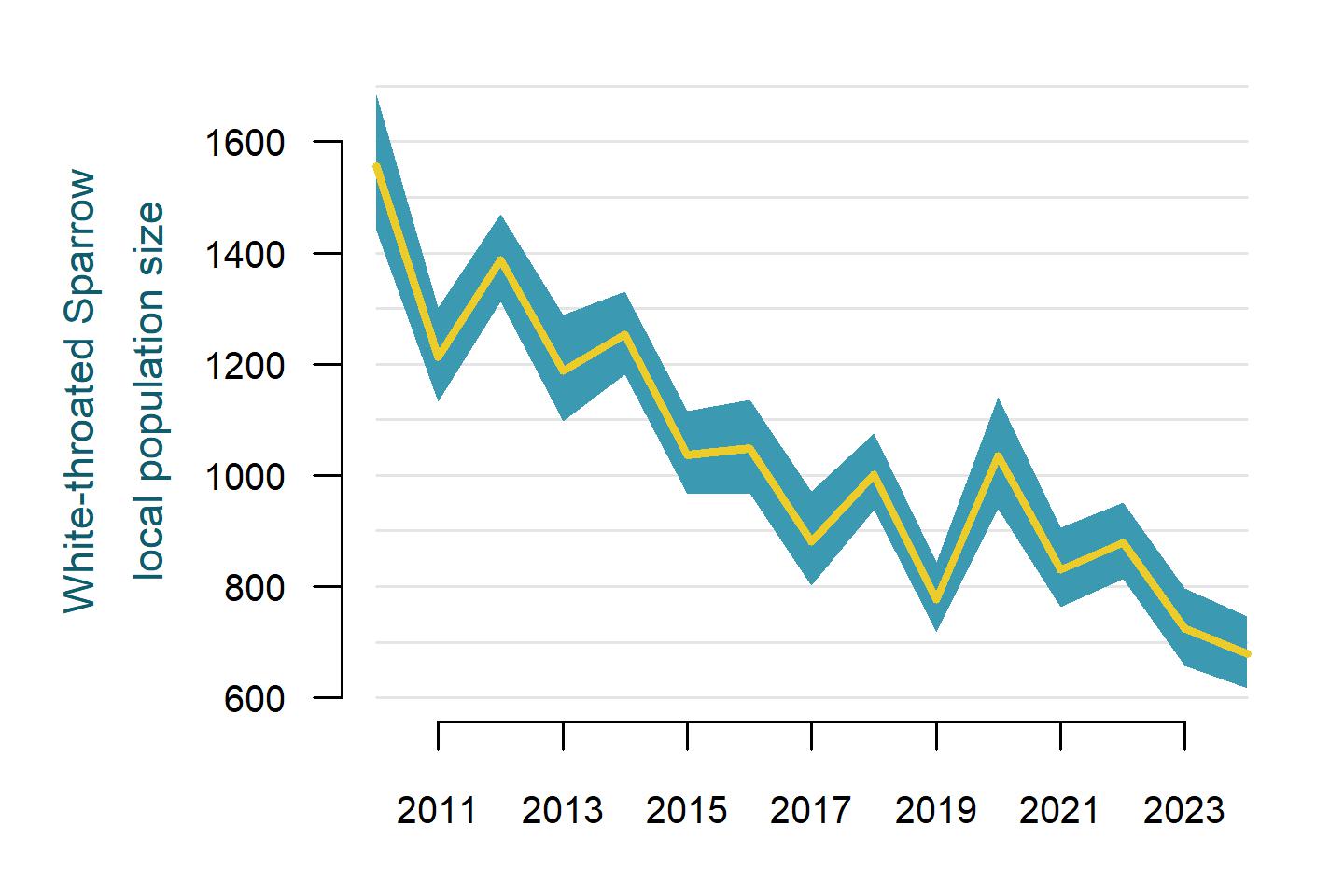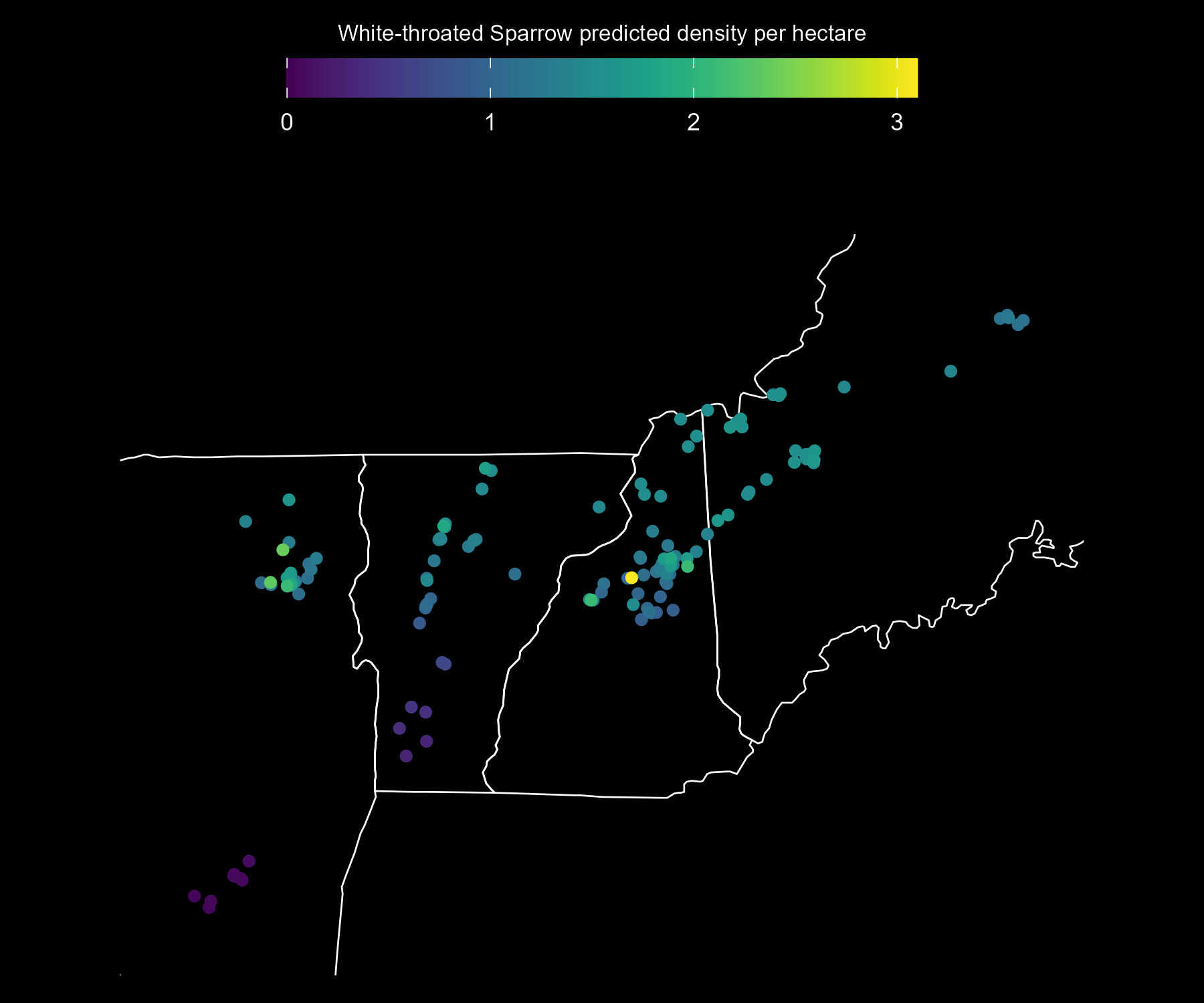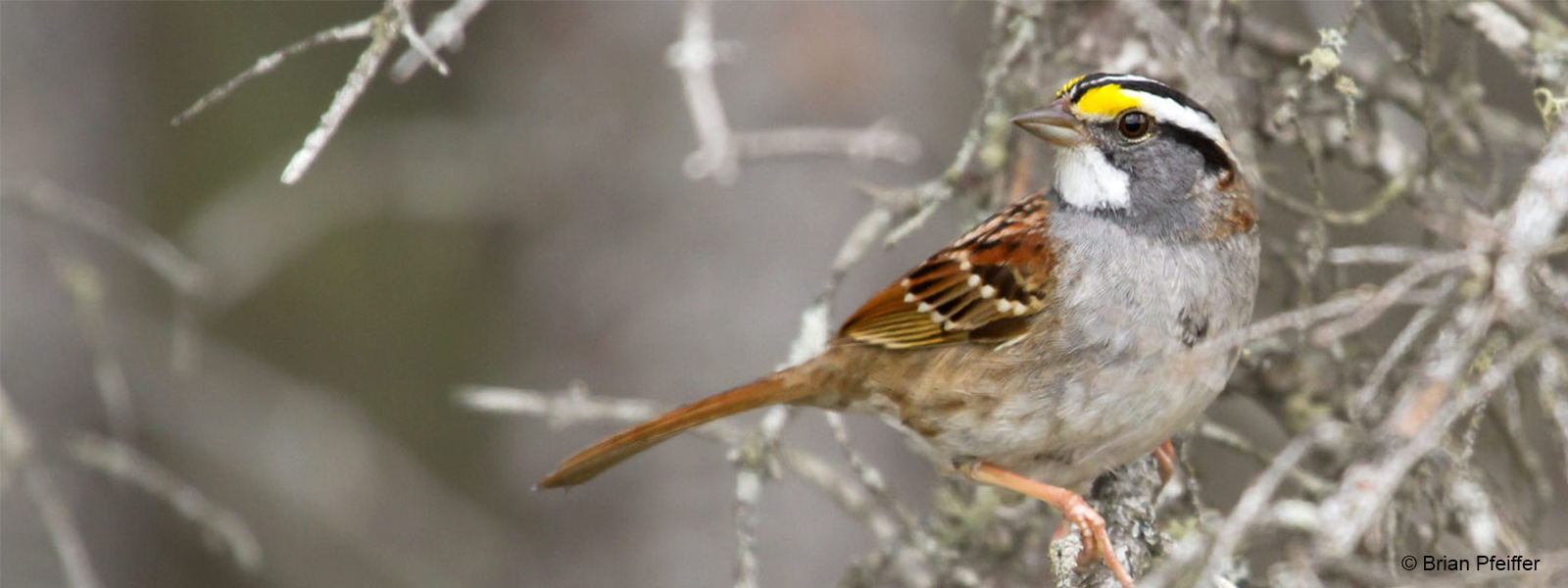The State of White-throated Sparrows in the Northeast
Regionally: Steeply declining

The mean (thick, yellow line) annual estimate of White-throated Sparrow abundance within the immediate area surrounding all 803 Mountain Birdwatch sampling locations, with a 95% Bayesian credible interval (blue polygon, representing estimate uncertainty).
White-throated Sparrow numbers have likely been declining throughout our region for at least the last half-century. Mountain Birdwatch data indicate a steep overall population decline (mean annual trend = -5.10% per year, 80% credible interval = -6.06% to -4.14%) in the mountains of our region; this trend equates to an incredible greater than 50% decline between 2010 and 2024. These declines are prevalent throughout the region, but the steepest and most dramatic declines were observed in the Catskills of New York (see table below). At those rates of decline, White-throated Sparrow could be absent as a breeding species in the Catskills by 2060.

Predicted White-throated Sparrow adult density per approximate hectare in an average year (between 2010 and 2024), as estimated from Mountain Birdwatch data. The base map shows the extent of the Mountain Birdwatch region: eastern New York, Vermont, New Hampshire, and western Maine.
| Region | Mean annual trend (%) | Trend (80% CRI) | Probability of decrease | Probability of increase | Population change (%) 2010-2024 | Population change (80% CRI) |
|---|---|---|---|---|---|---|
| All regions | (-6.06, -4.14) | >0.99 | <0.01 | -51.94 | (-58.35, -44.64) | |
| Maine | (-3.91, -1.72) | >0.99 | <0.01 | -32.87 | (-42.82, -21.51) | |
| New Hampshire | (-6.40, -4.15) | >0.99 | <0.01 | -53.18 | (-60.39, -44.75) | |
| New York (entire region) | (-8.97, -6.60) | >0.99 | <0.01 | -67.79 | (-73.17, -61.53) | |
| New York (Adirondacks only) | (-8.13, -5.70) | >0.99 | <0.01 | -63.30 | (-69.50, -56.03) | |
| New York (Catskills only) | (-20.02, -14.57) | >0.99 | <0.01 | -92.98 | (-95.62, -88.97) | |
| Vermont | (-6.35, -4.03) | >0.99 | <0.01 | -52.60 | (-60.10, -43.78) |
Globally: Declining
With a global population of ~140 million, the White-throated Sparrow remains an abundant species. However, USGS Breeding Bird Survey data estimate that this species’ population size has declined by >30% across North America over the last half century. The USGS Breeding Bird Survey data indicate a broad, long-term decline for White-throated Sparrows in the Eastern U.S. and Eastern Canada (where this species is most numerous), and a stable or increasing population trend for this species in the Western U.S. and Western Canada.


